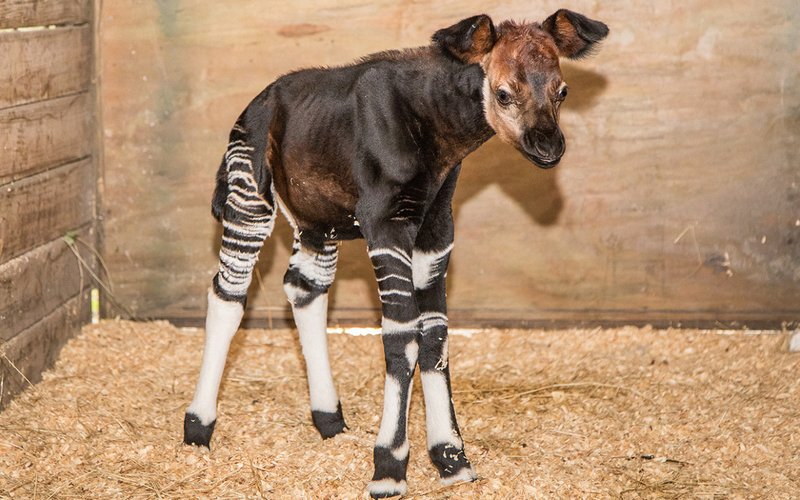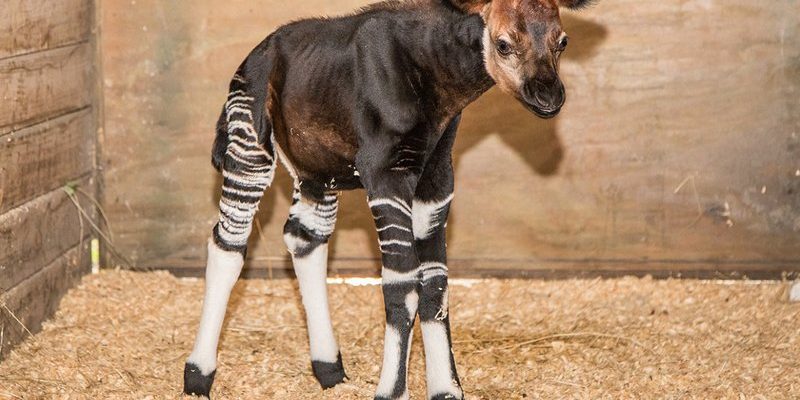
Imagine sitting in a café, sipping coffee, and chatting about the unusual wildlife out there. You might picture an okapi, with its striking stripes and long neck, peacefully munching on leaves. But can appearances be deceiving? Here’s the thing: while the okapi isn’t known for being aggressive, it’s essential to understand more about its behavior, habitat, and interactions with humans.
Understanding the Okapi’s Nature
The okapi, scientifically known as *Okapia johnstoni*, is a herbivorous mammal related to the giraffe. They are shy and elusive creatures, spending most of their time in the dense, tropical forests. With their long necks and unique coats, they blend seamlessly into their surroundings. This camouflage helps them avoid predators, but it also means they don’t typically cross paths with humans very often.
Here’s the thing: okapis may look gentle, but like any wild animal, they have instincts for survival. They can be very protective of their territory and young, which could lead to defensive behavior if they feel threatened. However, it’s essential to note that such encounters are rare since okapis prefer to steer clear of human activity.
Okapis and Their Habitat
Okapis inhabit the rainforests of the DRC, where they enjoy a rich diet of leaves, buds, fruits, and ferns. Their natural habitat is remote and challenging for humans to navigate. This isolation plays a significant role in decreasing the likelihood of dangerous encounters with people.
The okapi’s preferred environment is humid forests, which provide cover from potential predators. Picture a dense forest where the sunlight barely touches the ground—that’s where these creatures thrive. Since they are not social animals and tend to live alone or with their young, the chances of running into an okapi in the wild as a human are quite low.
Behavior: Are Okapis Aggressive?
Now, you might be wondering about their behavior. Generally, okapis are not aggressive animals. They have a calm demeanor, which makes them less likely to attack unless provoked. For instance, if a mother is protecting her calf, she might exhibit defensive behavior.
Despite their gentle nature, you should remember that they’re still wild animals. If cornered or threatened, even the most docile creature can react unpredictably. So, while they’re not known to be dangerous, it’s wise to respect their space and observe them from a distance if you ever get the chance.
Can Okapis Carry Diseases?
Another consideration when discussing the danger of okapis is their potential to carry diseases. Like many wild animals, okapis can harbor parasites and pathogens that may pose a risk to human health. However, the likelihood of transmission is low, especially since direct contact is rare.
In regions where okapis live, local people often have adapted to living in close proximity to wildlife. They understand the importance of hygiene and monitor their health carefully. Education about disease prevention is crucial, especially in areas where wildlife and humans coexist.
Protecting the Okapi: The Role of Conservation
Sadly, the okapi is listed as endangered due to habitat destruction, poaching, and conflict in the DRC. Conservation efforts aim to protect these unique creatures and their rainforest homes. By focusing on preserving their habitat and reducing human impact, we can minimize the risks of any dangerous encounters.
Conservation organizations work tirelessly to raise awareness about okapis. They provide education on how to coexist with wildlife safely and promote sustainable practices among local communities. Helping people understand the value of the okapi means protecting not just the animal, but also the entire ecosystem.
The Bottom Line
So, can the okapi be dangerous to humans? In short, the answer is no, at least not in the way that most dangerous animals are. This remarkable animal has more to fear from humans than we do from it. While they can display defensive behavior and might carry diseases, actual dangerous encounters are very rare.
Honestly, the focus should be on conserving this beautiful species and ensuring their survival in the wild. By understanding the okapi better, we can appreciate its role in the ecosystem and work towards a future where humans and these gentle creatures can coexist peacefully.
Whether you’re an animal lover, a budding conservationist, or just curious about these fascinating creatures, knowing about the okapi adds another layer to our understanding of wildlife and the delicate balance of nature. So, the next time you’re steeped in thoughts about animals, consider the okapi, and remember: they’re more about beauty than danger.

